“Judge a man by his questions rather than his answers.” ~ Voltaire
Through questions that are asked, this essay explores the recent intellectual history of cultural anthropology with respect to contemporary theoretical perspectives. Our inquiries explore a variety of topics. What makes different versions of a song the same song? What gives a song its integrity as a distinct musical utterance? And one or two others.
Theoretical Perspectives and Research:
Questions That Guide Studies in the Contemporary Field
This author was intrigued by ethnomusicologist Ruth M. Stone’s assertion, in Theory For Ethnomusicology, “One of the ways to compare theories is to consider what questions that theorists, employing a particular theory, find interesting and appropriate” (2008: 224). This author seeks to understand the questions that culture theorists and ethnomusicologists have asked in the past ten years. Or put another way, what is the recent intellectual history of cultural anthropology with respect to contemporary theoretical perspectives? This paper seeks to document a broad sample of questions regarding specific theoretical orientations posited by scholars that have been published since September 11, 2001. This date is not arbitrary, as it conveys to this author a global social impact that connotes a worldwide change in mood and perspective. This author suggests that three overlapping viewpoints – identity, modernity, and continuity – inform the experiences investigated by ethnomusicologists during this time period. Identity issues of uniqueness, retention, and change with respect to social encounters, gives rise to expressions of modernity. Modernity offers an approach to perceiving emerging genres through theoretical continuity in the field.
Since the early twentieth century, ethnomusicologists have focused on an array of theories. This writer sought out articles that were published by ethnomusicologists or other scholars who are informed by theoretical perspectives based on structural functionalism, ethnoscience and linguistic theories, paradigmatic structuralism, Marxism, literary and dramaturgical theories, cognitive and communication theories, performance theory, feminism, phenomenology, historical research, postmodernism, post colonial theory, and semiotics.
The objective of this paper was particularly self-centered. This author’s personal goal was to expand the interpretive horizon for his own experience of various theoretical approaches to ethnomusicology. The hope was that this quest would inform and develop this author’s understanding of contemporary cultural anthropology. Curiosity and inquiry would help to differentiate theoretical orientations and broaden this author’s knowledge of contemporary scholarship. Despite the fact that most articles strive to address a central thesis and that questions may be implied due to a point of view, relatively few articles state questions explicitly. What interested this author for this paper are the explicit questions. It was not an objective of this author to infer questions based on the conclusions or statements that were made in any given article. One objective is to better understand and compare contemporary theories that modern theorists find interesting.
The essays discussed by this author often incorporate multiple overlapping theoretical orientations, and each theory is not totally exclusive of one another. For instance, one senses dramaturgical ties with sociolinguistics or Marxist perspectives; neurobiological cognition enmeshed with phenomenology; Marxist approaches that inform ethnic studies; and gender and culture perspectives within the context of phenomenology.
In addition to overlapping approaches, this writer also sought to observe dichotomies. As oppositions were recognized, this writer focused on the one that is privileged so that implied hierarchies could be distinguished. Stone notes that French philosopher Jacques Derrida – one of the major figures associated with post-structuralism and postmodern philosophy and best known for developing a form of semiotic analysis known as deconstruction – suggests that in this way, one may “discern something of the operative ideology or system of value” (123). Structural elegance was sought as a way to evaluate the cohesiveness, integrity, and power of a particular theory.
Prior to gathering data, this author compiled a list of criteria to consider, including: “What is the level of focus?; Is the focus from a bird’s eye view or a jeweler’s eye view?; What is the nature of meaning for a given orientation?; What role has ethnographic fieldwork had on the approach?; How have they incorporated fieldwork with their approach?; What is the context for the meaning in which their perspective resides?; How does the theoretical orientation attend to temporal dimensions?; How does the work highlight and enrich research from other approaches?
A variety of media and sources were researched, including interviews, books, newspaper and magazine articles, audio and video recordings, academic journal articles and web sites. Searching for questions took more time than anticipated. Obviously one couldn’t predict the outcome. Although questions addressed by each of the above perspectives were researched, this author was unable to locate clearly articulated questions addressed by every theoretical perspective stated above. In addition, of the questions that are covered here, this paper intentionally does not always provide the conclusions or explanations that the original authors published. Thus, some approaches that are explored remain open ended. Conclusions may be found in the arguments and discourse of the cited article. Even when this author does cite conclusions, they are not intended to be complete or comprehensive, due to the limited length of this project.
Linguistic approaches to the study of music can be traced back to ethnomusicologists George Herzog and Béla Bartók, and continue to be valuable orientations. In Native American Music in Eastern North America, ethnomusicologist Beverly Diamond asserts that each language shapes and influences a view of the world (Diamond 2008:22). Associate Professor in the Department of English at Kent State University, Sara Newman, reviews Language and Emotion by James M. Wilce – 100 ethnographic case studies addressing linguistic anthropology. In Chapter 2, Wilce asks, “where shall we locate emotion…vis-à-vis language?” (2009:39). Consequently, Wilce examines words; metaphor; phonology, sound, iconicity; the voice; morphology and syntax; discourse level structures such as poetics and genre; and the mind or body. In “The Story of Dirty Face: Power and Song in Western Washington Coast Salish Myth Narratives”, the archivist for the ethnomusicology program at the University of Washington in Seattle, Laurel Sercombe, explores the role of music in the oral literature of the Pacific Northwest Coast region. Sercombe’s linguistic analysis of stories, using embedded short songs within the narrative text, illuminates through storytelling, a dramatic rendering of the mythological past. Dirty Face is a mythological character whose “song” exists in many Native cultures of this region. As Sercombe compares ten recordings of Dirty Face’s song by different storytellers, she asks, “What makes different versions of a song the same song?” and “What gives a song its integrity as a distinct musical utterance?” (2009:36). Sercombe explores the possibility that the rhythmic patterns and interrelationship of rhythm and text are the primary means by which the song has been identified and remembered for generations (49).
As a linguistic approach, semiotics explores the use of signs in language. Assistant professor in the Nicholson School of Communication at the University of Central Florida, Jonathan Matusitz asserts in his article, Semiotics of Music: Analysis of Cui Jian’s “Nothing to My Name,” the Anthem for the Chinese Youths in the Post-Cultural Revolution Era, “in order to conduct a proper semiotic analysis of lyrics, one approach is to look at text and meaning and not assume a connection between them, but to ask, “What are the possible connections?” (and) “What degree of connection can there be?”” (2010:168). Through exploring the semiotics of a song, his article explores the wide popularity and social rebellion of a youth culture. He sees popular music as a sign and semiotics as a way for social transformation. Additionally, he sees semiotics tied in with post modernism, a subject that is intertwined with other perspectives explored in this paper. In the conclusion of his article Matusitz states, “Popular music, or rock and pop, denotes a cultural object. It is a sign in itself, and the various ways of organizing it can be viewed as forms of semiotics. Popular music is a sign because it has many facets and many uses…” (173).
Likewise, dramaturgical theories are also multifaceted and may involve techniques used to highlight concepts. One aspect that dramaturgical theory focuses on is the framing process used to guide the audience to what is considered essential. Framing comes in through cues that may be textual, musical or visual through lighting. In his essay, “The Dramaturgical Genre” from the book Handbook Of Symbolic Interactionism (2003), Charles Edgley believes that dramaturgical perspectives are enhanced when they are intertwined with sociolinguistics. He asks, “What broader depictions of a dramaturgical framework are needed to provide insight to neutralize what many see as the alienation, anomie, and social disorganization that emerges from too narrow a rendering of this perspective?” Edgley asserts that one kind of drama, theatricality, “has been taken as synecdoche, to the detriment of our understanding of many other kinds of routines…” (160). He believes that the dramaturgical ties to sociolinguistics should focus on the “quotidian dramas of the routine” (160); i.e. routines that constitute praxes of everyday life because they seek a broader depiction of insight. Edgley states that the dramaturgical method is done well when the observer “has an appreciation of the idea that to be a human being is always to be on the way to something else” by having a “certain single-minded and unsentimental attention to interactions and relationships” (152). He states that, “Dramaturgy focuses on what people do within the contexts that are available to them” despite the fact that the focus is not on why these arrangements exist the way they do (153). Additionally, Edgley asks, “What is the Marxist praxis of dramaturgy?” He sees the answer in the concept of “ekstatsis”, the dramaturgical act of stepping outside oneself thus transforming one’s awareness of society in such a way that givenness (indisputability) becomes possibility (153).
Stone notes that cognition studies in ethnomusicology is a hot area, despite the relatively small quantity of contributions to ethnomusicology (2008: 133). In her book, “Deep Listeners: Music, Emotion and Trancing (2004), ethnomusicologist Judith Becker proposes that there may be a physiological relationship, between religious ecstatics, trancers, and secular deep listeners who share intense reactions to musical stimulation (56). A few years later in her essay, “Ethnomusicology and Empiricism in the Twenty-First Century”, Becker asks, “How does one begin to establish the veracity or falsity of the claim that deep listeners and religious ecstatics share some underlying physiological relationship?” and later inquiring, “What would it mean to think neurobiologically about culture?” and “what would it mean to think ethnomusicologically about the brain?” (478).
In his 2004 article, “Musical Archetypes and Collective Consciousness: Cognitive Distribution and Free Improvisation”, Jared B. Burrows investigates free improvisation from the perspectives offered by cognitive distribution theories as pioneered by George Herbert Mead, Wilhelm Wundt and Lev Semenovich Vygotsky. Burrows asks, “What is it that happens when a group of musicians improvise together?” and “How do they do it?” (1). His paper explores the metaphysical qualities of the collective consciousness through understanding structural, narrative and psychic musical archetypes.
In addition, it has been recognized that “Performance theory can be an encapsulated expression of shared cognitive forms and values” (2008: 40). In her 2004 article, “Jackson Pollock’s Post-Ritual Performance: Memories Arrested in Space”, Catherine M. Soussloff constructs a Jackson Pollock who is deeply engaged with the disciplines of his time including art criticism, psychoanalysis, studio art practice, poetry, and anthropology. At the beginning of the article Soussloff suggests that Levi-Strauss’s conception of the dialectic relationship between ritual and psychoanalysis might prove useful in thinking about the abstract paintings of Jackson Pollock. She concludes that Pollock’s abstractions may be best located in a performance theory “post-ritual” situation, in which both a political and aesthetic consciousness may rest complexly, and not always happily, upon unconscious desire (72). Soussloff asserts that the Hans Namuth films from 1950-51 “deny the mythic form of Pollock and that his painting is obscured in favor of narrative. The multiple cuts on action in Namuth’s film avoid “dead spots.” Such “dead spots” create the loss of narrative line. In cinema they are to be avoided if the desire is narration, such as the story of a painting. Narrative runs counter to trance” (64). Soussloff asks, “What sort of visual document would serve to illustrate the ritual and the myth of Pollock’s painting?” (73). She goes on to state that “visual anthropology has long sought a way to use film as part of ethnography, in what could be called a non-illustrative manner” and cites the “participatory” or “direct” cinema of anthropologist/filmmaker Jean Rouch, who in her view “provides a method for an ethnographic cinema in the first person, in which the meaning of ritual performance may be visualized” (73). Soussloff cites Rouch’s film, Tourou et Bitti (1967) which documents Songhay possession in Simiri, Niger. She defines her preference for one long take with a hand-held camera, thereby ceding the film’s rhythms to those of Rouch, “who in effect performs the ritual of possession of the Songhay” (73).
Another interesting question raised regarding performance theory concerns the use of the term “avantgarde”. David Savran notes in his 2005 essay, “The Death of the Avantgarde”, the term persists despite the fact that postmodernists are loathe to use expressions that connote a “progress narrative”, because modernist hierarchies have been superseded by a new cultural dispensation. In his article in The Drama Review Savran asks, “Why does the avantgarde refuse to die?” (10). He concludes, “because of the archaic character of the theatrical field…and the way it continues to conform to a modernist cultural hierarchy, there remains a remarkable resistance to giving up the word “avantgarde,” and not only in the pages of the New York Times” (35-36).
A variety of power structures have been questioned from a feminist perspective. Gender studies offer an important voice in ethnomusicology. Stone notes “in recent years more women have been obtaining advanced degrees” and goes on to wonder “How has this affected the (ethnomusicological) studies that have been done?” (2008:146). Ethnomusicologist Maureen Mahon observes sociopolitical struggle and activism as a form of cultural politics found in a concert production. In her essay, “ The “Daughters of Soul” Tour and the Politics and Possibilities of Black Music”, Mahon asks, “What are the cultural politics of black women’s musical production?” and “What are the politics and possibilities of contemporary black music production in the age of neoliberalism?” (207). With regard to black women’s use of sexuality in performance, Mahon asks, “Are they objectifying themselves or exercising agency through self-definition? Are they asserting control over their image? Or are they capitulating to expectations of how women on stage should display their bodies? If they are doing all of these things at once, does one action take precedence?” (219).
Anthropologists recognize that ethnic boundary and identity markers include religion, dress, language or dialect, and other visible symbols (Scupin and DeCorse 2008: 606). As stereotypes developed through association with New Age spiritual movements in the last 50 years, many Native American images and ideas were appropriated for capitalist endeavors. Television commercials, clothing, jewelry, etc were all stylized with buzzwords associated with “traditional indigenous knowledge” [TIK]. Beverly Diamond sees the challenge to carefully consider the sources that claim to define TIK and the conditions from which these sources emerged, asking “Who claims TIK and for what purposes?”(Diamond 2008: 12). Additionally, Diamond seeks to learn how musical media and styles of the late 20th and early 21st centuries influence Native American expressions of modernity. She asks, “Has music continued to mediate “encounter” in the same way? How do contemporary styles and musical media demonstrate modernity for First Nations, Métis, and Inuit people? In what ways are Native North American expressions of modernity constrained by the values of non-Aboriginal modernities? Does traditional indigenous knowledge play any role in shaping the composition, production, circulation, and reception of Native North American music?” (135). Diamond suggests that ethnomusicologists may begin to answer these questions by looking at genre, language, themes, style and arrangement, citational practices, and cross-cultural alliances.
Ethnomusicologist David W. Samuels looks at country music and ethnic boundary crossing in his 2009 article “Singing Indian Country”. He asks, “By what magical process can Anglo-American country music come to sonically represent Indians as well?” and “How can the sounds of white, hardscrabble, blue-collar, evangelical Christian, sometimes racist ideologies be embraced by the very people against whom those ideologies have often been so destructively employed? (141). Later he asks, “What kinds of participation and expression does the choice of country music style make possible for Native people?” and “What can one say in a country style that might be different from what one can say, for example, within the musical frameworks of rock, reggae, or hip-hop?” (147).
Postcolonial theorists seek to understand the effects of colonialism and this has impacted the contemporary discourse among musicologists and ethnomusicologists. The colonizers interaction with the colonized may take on their attributes and the language of the colonizer may be appropriated and transformed by the colonized. Musicologist Marianne Kielian-Gilbert asks in her 2011 article, “Musical Bordering, Connecting Histories, Becoming Performative”, “How can encountering (acknowledging) difference – the other and the new – spark interactions and creative ways of experiencing and thinking?” (200). The author argues that familiar dialectical oppositions such as presentism versus historicism, creationism versus evolutionism, and analytically versus historically “inferential” logics end up perceiving musical form and content as mutually exclusive. She finds her answers by defining musical bordering, border crossing, and becoming as “bordering holds the potential of “becoming” – of passing through different degrees and forms of intensity and of moving between states in metamorphic transformation” (200). Other questions Kielian-Gilbert asks include: “How might historical references or schemata work as “objects” for development in creating emergent dimensions?” and “How might musical forces of tradition, autonomy, and emancipation interact to assert music’s multi-dimensionality, and thus the aesthetic and political possibilities of its performance?” (203).
In postcolonial thought, Western ethnomusicology is not viewed by all as a model for study. Some scholars feel that western ethnomusicologists have ignored other models of study. Music scholar Kofi Agawu states, “Postcolonial theory encourages a new self-awareness, rewards the eagerness to lay bare the situatedness and precariousness of various frames of knowledge construction, and takes particular pleasure in relativizing and decentering European intellectual hegemony (Agawu 2003: xvii). J. Lawrence Witzelben, Travis Jackson and Steven Loza are authors who have argued for the inclusion of nonwestern indigenous methods of scholarship and theories. With regard to ethnomusicological theoretical orientations that are espoused in the United States, Loza specifically attacks what he terms “The Theory Problem” when he asks “How do we fight this machine of “Do it our way or no way?” (362).
In contrast to the broader social interactions discussed above, phenomenology is one of the most finely focused perspectives that is acutely attuned to temporal aspects specific to individuals and close associates. In his 2008 essay, “Phenomenology and the Ethnography of Popular Music: Ethnomusicology at the Juncture of Cultural Studies and Folklore”, ethnomusicologist Harris M. Berger posits several intriguing questions about musical consciousness as experienced from the first-person point of view including: “Which elements of the music sound are the foci of the participant’s attention?; Which ones are located on the fringes of attention, which ones trail off into the horizon of experience, and which ones are actively ignored?; How does the organization of attention differ among varying participant’s in the interaction?; What place does music sound have among the varying elements of the event, such as the visual appearance and behavior of the other participants, memories, fantasies, or the participant’s experience of his/her own body?; How is the experience of the event organized across its temporal length?; How are elements of music sound or other parts of the event retained in experience once they have moved into the recent past, and what structures of expectation are at play?” (71).
The multitudinous theoretical perspectives discussed above have created challenges for a comprehensive multi-perspective approach. Historical musical research may contain interviews, transcriptions and recordings that may be used to inform musical ethnography. Virginia Danielson’s 2007 article, “The Canon of Ethnomusicology: Is There One?” looks into the shifting canon that informs ethnomusicologists to inquire, “…what is bedrock?… and how does one collect resources in support of such a canon?” (230). Danielson advocates abandoning previous notions of “bibliographic control” and “comprehensive collecting” in favor of multimedia documents with detailed text, photographs, audio and video media (230).
In a broader sense, we could wonder about the meaning of all of these questions. However, this author believes that we can participate with a greater sense of action through wondering, “What do these questions do? Is there a trend? Does there have to be? In the epilogue of Comparative Musicology and Anthropology of Music, Phillip V. Bohlman asserts, “ideology as a theme is impossible to ignore when writing the history of the field” (359). Ideology may be the generator of meaning and meaning is created in social interaction. There is a social integration that is part of the institutional functioning of the 56-year-old field of ethnomusicology. The social agents and employed perspectives have developed complex sets of meanings that seem to coexist as part of a growing unitary matrix. The intense energy of our contemporary era fosters the multi-perspective comparisons that intellectual historians encourage in our flattening world,[i] thus representing and informing a larger, more global experience.
END NOTES
[i] Reference to Thomas Friedman’s book, The World Is Flat: A Brief History of the Twenty-first Century.
Referenced Works
Aronson, Arnold. 2000. American Avant Garde Theater: A History. New York: Routledge.
Agawu, Kofi. 2003. Representing African Music: Postcolonial Notes, Queries, Positions. New York: Continuum.
Becker, Judith. 2004. Deep Listeners: Music, Emotion and Trancing. Bloomington, IN: Indiana University Press.
———. 2009. “Ethnomusicology and Empiricism in the Twenty-First Century,” Ethnomusicology 53(3): 478-501.
Berger, Harris M. “Phenomenology and the Ethnography of Popular Music: Ethnomusicology at the Juncture of Cultural Studies and Folklore.” In Shadows in the Field: New Perspectives for Fieldwork in Ethnomusicology, second edition, edited by Gregory F. Barz and Timothy J. Cooley, 62-75. Oxford: Oxford University Press, 2008.
Berghaus, Gunter. 2005. Theater, Performance and the Historical Avant-Garde. New York: Palgrave McMillan.
Bohlman, Phillip V. “Epilogue.” In Comparative Musicology and Anthropology of Music: Essays on the History of Ethnomusicology, edited by Bruno Nettl and Phillip V. Bohlman, 356 – 360. Chicago, IL: University of Chicago Press, 1991.
———. “Representation and Cultural Critique.” In Comparative Musicology and Anthropology of Music: Essays on the History of Ethnomusicology, edited by Bruno Nettl and Phillip V. Bohlman, 131-151. Chicago, IL: University of Chicago Press, 1991.
Burrows, Jared B. “Musical Archetypes and Collective Consciousness: Cognitive Distribution and Free Improvisation,”Critical Studies in Improvisation, 1 (1) 2004. Accessed Dec. 21, 2011. http://www.criticalimprov.com/article/view/11/35.
Danielson, Virginia. 2007. “The Cannon of Ethnomusicology: Is There One?” Notes 64 (2): 223-31.
Diamond, Beverley. 2008. Native American Music in Eastern North America: Experiencing Music, Expressing Culture. New York: Oxford University Press.
Edgley, Charles. “The Dramaturgical Genre.” In Handbook Of Symbolic Interactionism, edited by Larry T. Reynolds and Nancy J. Herman-Kinney, 141-160. Berkeley, CA: Altamira Press, 2003.
Friedman, Thomas. 2005. The World Is Flat: A Brief History of the Twenty-first Century. New York: Farrar, Straus and Giroux.
Frisbee, Charlotte J. 2006. “A View of Ethnomusicology from the 1960s,”Ethnomusicology 50(2): 204-13.
Goldberg, Roselee. 2001. Performance Art – From Futurism to the Present. New York: Thames and Hudson.
Jackson, Travis. 2006. “Rearticulating Ethnomusicology: Privilege, Ambivalence, and Twelve years in SEM,” Ethnomusicology 50(2): 281-82.
Kielian-Gilbert, Marianne. 2011. “Musical Bordering, Connecting Histories, Becoming Performative,” Music Theory Spectrum, 33(2): 200-07.
Lewis, George. “Gittin’ To Know Y’all: Improvised Music, Interculturalism,and the Racial Imagination,” Critical Studies in Improvisation, 1(1) 2004. Accessed Dec. 21, 2011. http://www.criticalimprov.com/article/view/6/14.
Loza, Steven. 2006. “Challenges to the Euroamericentric Ethnomusicological Canon: Alternatives for Graduate Readings, Theory, and Method,” Ethnomusicology 50 (2): 360-71.
Marx, Karl. 1964. Pre-capitalist Economic Formations. London: Lawrence and Wishart.
Matusitz, Jonathan. 2010. “Semiotics of Music: Analysis of Cui Jian’s “Nothing to My Name,” the Anthem for the Chinese Youths in the Post-Cultural Revolution Era,” The Journal of Popular Culture, 43(1): 156–75.
Maureen Mahon. “The “Daughters of Soul” Tour and the Politics and Possibilities of Black Music.” In Ethnographies of Neoliberalism, ed. Carol J. Greenhouse, 207-220. Philadelphia: University of Pennsylvania Press, 2010.
Merriam, Alan P. 1964. The Anthropology of Music. Evanston, IL: Northwestern University Press.
Morcom, Anna. 2008. “Getting Heard in Tibet: Music, Media and Markets,” Consumption, Markets & Culture 11(4): 259-85.
Nettl, Bruno and Phillip V. Bohlman, eds. 1991. Comparative Musicology and Anthropology of Music: Essays on the History of Ethnomusicology. Chicago, IL: University of Chicago Press.
Newman, Sara. Review of The Dramaturgical Genre, by Charles Edgley. Rhetorical Review 8:2, October 2010: 12-15.
Qureshi, Regula Burckhardt. 2002. Music and Marx: Ideas, Practice, Politics. New York: Routledge.
Reynolds Larry T. and Nancy J. Herman-Kinney, eds. 2003. Handbook Of Symbolic Interactionism. Walnut Creek, CA: Altamira Press.
Samuels, David W. 2009 “Singing Indian Country.” In Music of The First Nations – Tradition and Innovation in Native North America, edited by Tara Browner, 141-159. Urbana and Chicago: University of Illinois Press.
Savran, David. 2005. “The Death of the Avantgarde” The Drama Review 49 (3): 10-42.
Sercombe, Laurel. 2009 ““The Story of Dirty Face: Power and Song in Western Washington Coast Salish Myth Narratives.” In Music of The First Nations – Tradition and Innovation in Native North America, edited by Tara Browner, 34-53. Urbana and Chicago: University of Illinois Press.
Soussloff, Catherine M. 2004. “Jackson Pollock’s Post-Ritual Performance: Memories Arrested in Space,” The Drama Review 48 (1): 60-78.
Stone, Ruth M. 2008. Theory for Ethnomusicology. Upper Saddle River, NJ: Prentice Hall.
Wilce, James W. 2009. Language and Emotion – Studies in the Social and Cultural Foundations of Language. Cambridge: Cambridge University Press.
Witzelben, J. Lawrence. 1997. “Whose Ethnomusicology? Western Ethnomusicology and the study of Asian Music, ”Ethnomusicology 41(2): 220-42.
#################################################################
- Intro Guitar Technique and Advanced Guitar and Performance Techniques - May 30, 2016
- Critical Theory And The End Of Noise – Post #6 of 6 - April 15, 2015
- Critical Theory And The End Of Noise – Post #5 of 6 - March 31, 2015
- Critical Theory And The End Of Noise – Post #4 of 6 - March 11, 2015
- Western Music History From Antiquity Through The 18th Century - March 4, 2015
- Anthropology of Music – Post #3 of 3 - February 25, 2015
- Native American Perspectives in Music – Post #3 of 3 - February 18, 2015
- Critical Theory And The End Of Noise – Post #3 of 6 - February 11, 2015
- Music Theory And Harmony - February 4, 2015
- Anthropology of Music – Post #2 of 3 - January 28, 2015



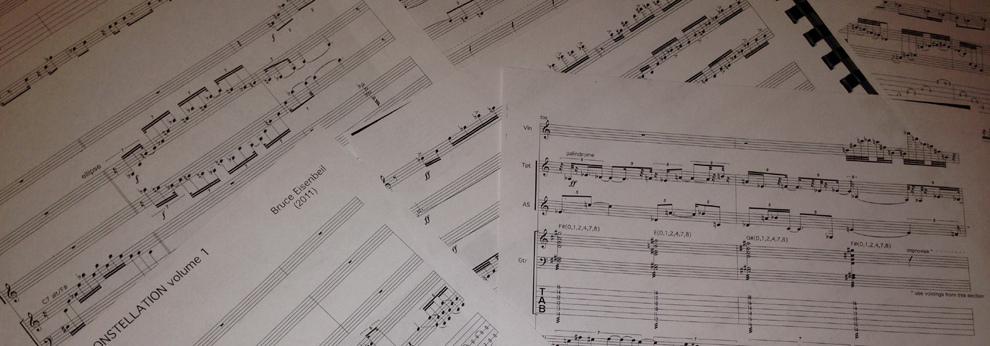

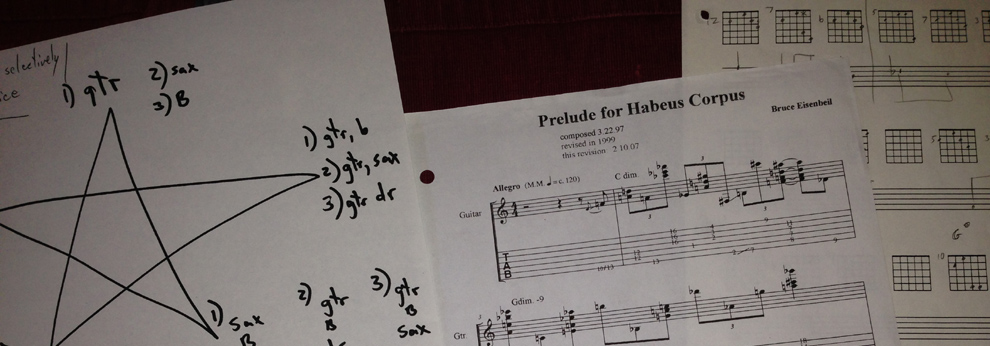
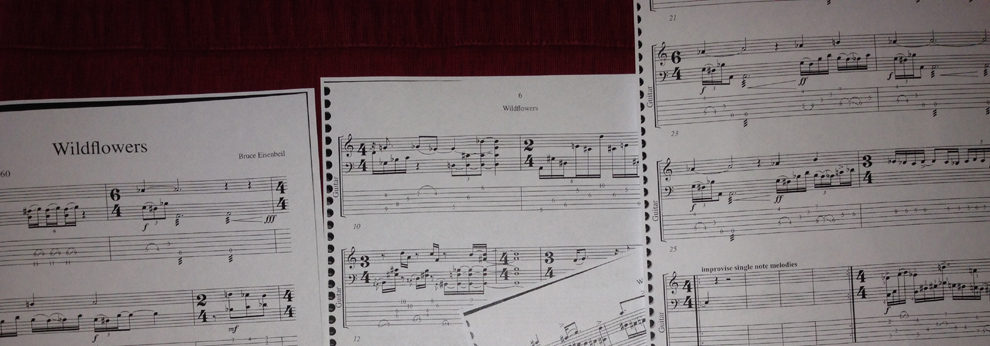








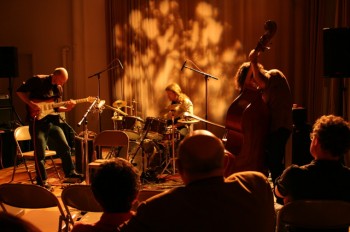
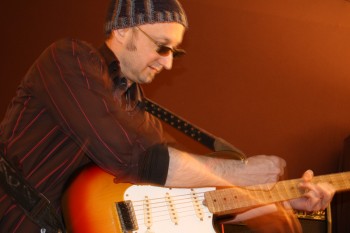
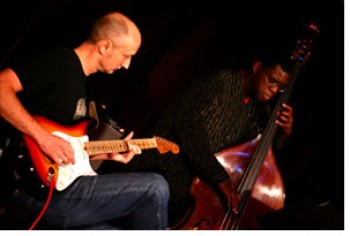


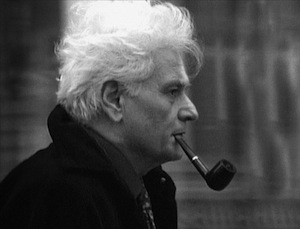
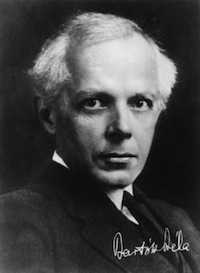




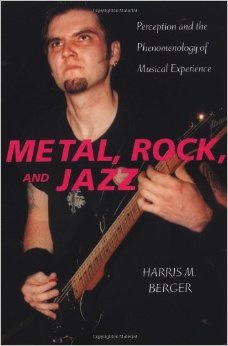

Social Profiles